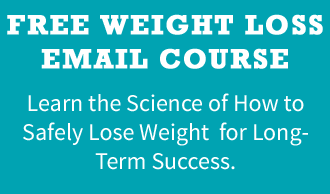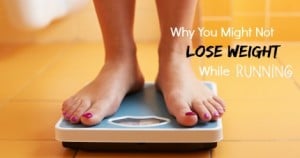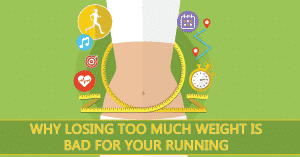Last week, I introduced metabolism and described how body weight and resting metabolic rate (RMR) are connected. I also mentioned that there are three components to metabolism: resting metabolic rate, the thermic effect of food, and energy expended for physical activity.
In this article, we’ll shift from the metabolic process and focus on the physical activity portion of metabolism and discuss the ways in which exercise can affect energy balance.
Physical activity is the most variable component of one’s overall metabolism due to the fact that some individuals are very active while some are not active at all.
It is well known that physical activity is important for weight loss because it adds to the “energy expenditure” side of energy balance to help create a negative energy balance and thus leads to weight loss. But how much does it really effect energy balance and in what ways?
There are a number of proposed ways that physical activity, or exercise, is thought to induce negative energy balance. One or more of the following mechanisms is usually in play:
- The direct energy cost of the exercise
- The effect of exercise on RMR
- The effect of exercise on the thermic effect of food and
- The effect of exercise on food intake
Energy cost of physical activity
Physical activity can be categorized two ways. One is the physical activity associated with our daily activities, such as what we do for work. The energy costs associated with construction work are much higher than those associated with a desk job.
When estimating one’s daily energy needs, we will typically multiply RMR by an activity factor determined by how active one is in their daily routine. This can be anywhere from 1.2 to 2.5 in the general population and can vary from day to day, week to week, month to month, or year to year.
The other consideration to make regarding physical activity is the direct energy cost of a single exercise bout. This energy or calorie cost of running is actually smaller than what most runners might think.
While it is true that a two-hour long run “burns” a lot of calories, the energy expenditure associated with a single bout of energy is not quantitatively important unless it is repeated on a chronic basis (i.e. daily).
For example, a two-hour long run may burn 1200 calories, which seems like a lot for that day, but only equates to about 1/3 of a pound of weight loss. If that were the only exercise bout completed in a week, it would have a very minimal contribution to the overall energy balance equation.
With that said, daily exercise helps create a growing “bank” of burned calories which can become a significant contributor to weight loss, especially when combined with a modest reduction in energy intake.
Energy cost and body weight
Of course it should be noted that the energy expenditure associated with exercise is not the same for each individual, or even within the same individual.
The energy cost for a given activity depends on body weight and the level of training and skill and individual has with that activity.
Last week we learned that as body weight decreases, RMR will also decrease slightly. The same is true for the energy costs of physical activity, however this can also be affected by training adaptations.
Most endurance athletes are familiar with VO2max. It is a measure of the maximum oxygen intake that can be consumed by the body during exercise per unit of time. Oxygen consumption is linearly related to energy expenditure in that the more oxygen consumed during exercise, the greater the energy expenditure for that exercise bout.
The amount of oxygen required for an exercise bout is reflected by the intensity of the exercise.
- Low intensity exercise, such as slow jogging, is usually done at about 30-50% VO2max.
- Moderate intensity exercise, such as fast jogging or easy run pace, is usually done at about 50-65% VO2 max.
- High intensity exercise, such as a threshold run, is usually done at about 70-80% VO2max
- Very intense exercise can reach 100% VO2max
As we train, we gain fitness and increase our VO2max. This means we become more efficient at using oxygen so it requires a higher intensity to achieve the same percent VO2max, and thus same caloric burn, as before.
This is a good thing from the perspective of become a faster runner, but not so good when trying to lose weight.
Adaptations to training are often one reason why weight loss efforts seem to plateau despite maintaining, or even increasing, exercise.
Effect of exercise on RMR
Acute bouts of exercise have been shown to have acute effects on RMR. This increase in energy expenditure seen after an exercise bout is completed in due to excess post-exercise oxygen consumption. This phenomenon is sometimes referred to as the “post-exercise burn”.
- The increase in RMR is proportional to the intensity of the exercise and is usually only seen after about 80-90 minutes of high intensity exercise (70-75% VO2max). Duration of the increase in RMR is also dependent on the duration and intensity of the exercise bout and has been shown to be between 4-24 hours, with a maximum of about 36 hours post-exercise being observed.
- The degree to which RMR increases is variable and has been noted in the literature to be anywhere from 2-15%, with a 3-5% increase most commonly observed. To put this into perspective, if your RMR is 2000 calories, that could increase acutely by 60-100 calories. So although high intensity exercise does acutely affect RMR, it ultimately has very little impact on weight management.
Nab Our FREE 4-part Weight Loss Email Course
You’ll learn the science behind losing weight and still running well so you can understand the “why” of weight loss for long-term success.
Lessons include why simply running more and eating less won’t help you lose weight, why your weight fluctuates each day, and the best way to distribute calories throughout your day. Plus more…
Effect of exercise on energy intake
It is a widely held belief that one reason why exercise for weight loss doesn’t work is because we increase our energy intake to compensate, and often overcompensate, for any exercise-induced energy deficit (“burned calories”).
When exercise bouts are low in duration and intensity, we may tend to overcompensate with energy intake while when exercise bouts are long and intense, increases in energy intake may not be enough to fully compensate for the increase in expenditure.
While this may be true for some, energy expenditure and energy intake are not always coupled in this way. There are a number of other possible relationships that describe how one may change energy intake in response to exercise-induced energy expenditure.
The connection between energy and appetite
Another possible relationship is that exercise reduces appetite and suppresses energy intake.
Many times runners report not being hungry after exercise, especially after very intense workouts or long runs. This can make adequate recovery difficult, but could ultimately be a good thing for weight loss. However, from personal experience I know that energy intake isn’t actually suppressed, just delayed. It is likely that we compensate for energy expenditure in the following hours or days, i.e. we eat for yesterday and not for today.
Most evidence suggests that there is ultimately no change in hunger or energy intake in response to exercise-induced energy expenditure. A review by Blundell analyzed 48 intervention studies of various durations measuring energy intake in response to deliberate exercise. He found that 31/48 studies showed no change in energy intake while 9/48 showed increases in intake and 8/48 showed decreases in intake.
A final relationship may be that increases in exercise-induced energy expenditure alter food choices or nutrient selections. Indeed, we often make healthier food choices in conjunction with adopting a healthier lifestyle, such as choosing to exercise. On the other hand, we may also make poorer food choices as a “reward” for working hard and burning calories. This relationship is not as well studied but is worth paying attention to the next time you are deciding what to eat following a run.
Bottom line
The best formula for weight loss is daily exercise coupled with a decreased energy intake in order to create a negative energy balance. However, understanding how this formula affects metabolism is important for achieving and maintaining healthy weight loss. Here are a few tips to keep in mind, help you stay on track, and keep you from feeling frustrated when weight loss seems to stall.
- As you lose body weight you will hopefully be losing body fat, but you will also temporarily lose some muscle mass (fat-free mass). A reduction in fat-free mass correlates with a reduction in RMR, meaning that you will need to reduce caloric intake slightly more than before to compensate.
- As you train more and become a more fit and efficient runner, your VO2max will increase. This means that you will burn less calories than you previously did running the same workout unless you also increase the intensity and work harder (consume more oxygen/ work at a higher %VO2max) or increase the duration of the workout.
- A lower caloric intake than you previously had will also translate into a lower RMR. Although the differences may be small, if you are habitually consuming more calories than you need you may start to see that weight creep back up over time.









2 Responses
This topic is fascinating to me. But doesn’t really coincide whit my experiences.
I mountain, trail run alone daily for a minimum of an hour (usually a bit more). Basically I take no days off unless I’ve managed to injure myself while running. I’m 70 years old, if it is important. It probably is but I hope not;).
In the last couple of years I’ve gone from size 38 to 32 waist and I’m about 6’2″ and shrinking from 6’4″ 😉 BTW, I’m not interested in loosing weight at my age.
Thanks again for a stimulating article.
Emily,
Do you recommend eating the same calories per day or to eat based on exercise expenditure? With there being so many calorie calculators out there providing different numbers for weight loss/maintenance/or even gaining, how does one know what calorie intake to aim for? I’m 5’8 150lbs, 15% body fat, 36yr male and run 50 miles/week and am eating 2,500 calories per day. I’d like to get down to 145lbs or so to help with marathon. Am I on point?